 RDL Homepage |
 Table of Contents |
 Document Information |
 Download Instructions |
 RDL Homepage |
 Table of Contents |
 Document Information |
 Download Instructions |
| When the enemy is driven back, we have failed, and when he is cut off, encircled and dispersed, we have succeeded. |
| Field Marshal Prince Aleksander V. Suvorov |
Encirclement operations are operations where one force loses its freedom of maneuver because an opposing force is able to isolate it by controlling all ground lines of communication and reinforcement. A unit can conduct offensive encirclement operations designed to isolate an enemy force or conduct defensive encirclement operations as a result of the unit's isolation by the actions of an opposing force. Encirclement operations occur because combat operations involving modernized forces are likely to be chaotic, intense, and highly destructive, extending across large areas containing relatively few units as each side maneuvers against the other to obtain positional advantage.
D-1. The commander intends offensive encirclements to isolate an enemy force. Typically, encirclements result from penetrations and envelopments, or are an extension of exploitation and pursuit operations. As such, they are not a separate form of offensive operations but an extension of an ongoing operation. They may be planned sequels or result from exploiting an unforeseen opportunity. They usually result from the linkup of two encircling arms conducting a double envelopment. However, they can occur in situations where the attacking commander uses a major obstacle, such as a shoreline, as a second encircling force. Although a commander may designate terrain objectives in an encirclement, isolating and defeating enemy forces are the primary goals. Ideally, an encirclement results in the surrender of the encircled force. This minimizes friendly force losses and resource expenditures.
D-2. An encirclement operation usually has at least two phases-the actual encirclement and actions taken against the isolated enemy. The commander should consider adjusting his task organization between phases to maximize his unit's effectiveness in each phase. The first phase is the actual encirclement that results in the enemy force's isolation. The organization of forces for an encirclement is similar to that of a movement to contact or an envelopment. The commander executing an encirclement operation organizes his forces into a direct pressure force and one or more encircling arms. Armor, mechanized and motorized infantry, aviation, air assault, and airborne units are especially well suited for use as an encircling arm since they have the tactical mobility to reach positions that cut enemy lines of communications (LOCs). The presence of bypassed and encircled enemy forces on the flanks and rear of advancing friendly forces requires all-around security, which includes local security measures and security forces.
D-3. One commander should direct the encirclement effort. However, there must also be unity of command for each encircling arm. The encircling force headquarters may name one of its subordinate units as the headquarters for an encircling arm. Alternatively, that force headquarters may create a temporary command post from organic assets, such as its tactical command post, to control one or more arms of the encirclement. If that encircling arm has subordinate inner and outer arms, each of them also requires separate subordinate commanders. The missions and spatial orientation between the inner and outer encircling arms are sufficiently different; therefore, one force cannot act in both directions at once. (See Figure D-1.)
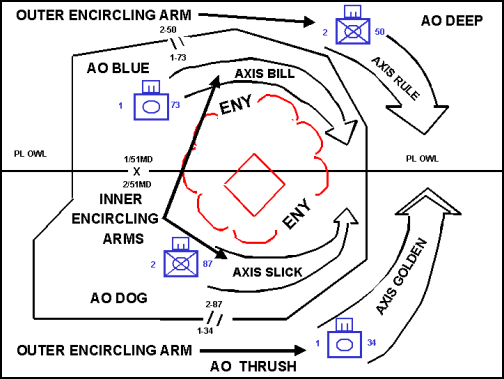
Figure D-1. Inner and Outer Arms of an Encirclement
D-4. The commander organizes only an inner encircling arm if there is no possibility of the encircled forces receiving relief from enemy forces outside the encirclement. If there is danger of an enemy relief force reaching the encircled enemy force, the commander organizes both inner and outer encircling arms. He assigns the outer encircling arm a security mission, an offensive mission to drive away any enemy relief force, or a defensive mission to prevent the enemy relief force from making contact with the encircled enemy force. Once the encirclement is complete, these inner or outer encircling arms form a perimeter.
D-5. The second phase of an encirclement operation involves actions taken against an isolated enemy. The commander's decision on whether to fix, contain, or destroy isolated enemy forces affects his task organization, as will enemy attempts to break out from the encirclement or linkup with the encircled force. All these possible outcomes require resources in terms of units and supplies, but some require more resources than others do. If the commander's mission is to contain or fix an isolated enemy, he organizes his forces for defensive action and arranges them around the enemy's perimeter. If the commander's mission is to reduce or destroy that same enemy, he organizes his forces for offensive action. A higher commander often assigns either mission to the commander of a follow-and-support force.
D-6. Regardless of whether the commander decides to fix, contain, or destroy the enemy, he conducts reconnaissance to maintain contact and monitor enemy actions in response to the encirclement. This allows him to respond effectively to any enemy movement. The most effective reconnaissance combines ground, aerial, and surveillance systems to provide constant coverage and multiple assessments of enemy activities throughout the encircled area.
D-7. Control measures for an encirclement are similar to those of other offensive operations, especially an envelopment, but with a few additional considerations. (See Figure D-2.) If the commander uses both an inner and an outer encircling arm, he must establish a boundary between them. He should place the boundary so that each element has enough space to accomplish the mission. The inner force must have enough space to fight a defensive battle to prevent the encircled force from breaking out. The outer force must have adequate terrain and enough depth to its area of operations (AO) to defeat any attempt to relieve the encircled force.
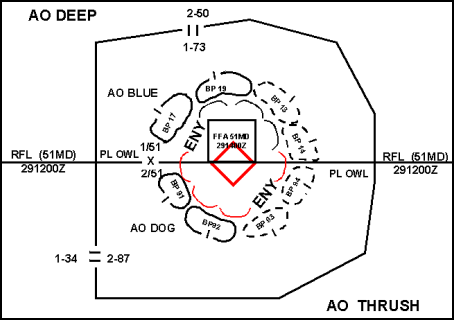
Figure D-2. Encirclement Control Measures
D-8. The commander who controls both converging forces establishes a restricted fire line (RFL) between them. The commander may also establish a free fire area (FFA), which encloses the area occupied by a bypassed or encircled enemy forces. (Chapter 2 discusses the use RFLs, FFAs, and other fire support coordinating measures.)
D-9. Encirclement operations may require allocating large forces and significant resources. They take a great deal of time and usually slow an advance. If the mission of the encircling force is to maintain contact with a bypassed enemy force, the following general planning considerations apply:
Determine the best available assets that gain and maintain contact with the enemy.
Keep the enemy isolated and incapable of receiving intelligence, logistics, and fire support from enemy formations outside of the encirclement.
Use intelligence, surveillance, and reconnaissance (ISR) assets so that the commander knows the capabilities of the encircled force and, as much as possible, its commander's intentions.
Retain freedom of maneuver.
D-10. The commander applies the general defensive planning considerations outlined in Chapter 8 if the mission is to contain or fix the encircled enemy force in a given location. If the mission is to attack and destroy the encircled enemy force, he applies the planning considerations outlined in Chapters 3 and 5. Commanders should plan to rotate the forces involved in reducing the encircled pocket to maintain constant pressure on the enemy.
D-11. Every encircled enemy unit reacts differently. Initially, some become demoralized and cannot offer any serious resistance. However, if left undisturbed, most enemy units recover and attempt to break out and regain contact with their main force or attack the flank and rear of advancing friendly units. The encircling force must plan for the enemy's most probable reactions.
D-12. If the enemy force is not reduced and it can be resupplied, or it has access to considerable supply stocks, it continues to be a serious threat to the commander in future operations. The encircling force must be approximately equal in size to this type of encircled force to fix or contain it. This situation occurred when German forces occupied various fortified French ports after Allied armies liberated the rest of France in 1944. Each encircled German division took approximately one Allied division to maintain its isolation. Conversely, an enemy force isolated without adequate supplies either surrenders or faces containment by considerably smaller forces. This situation occurred in Egypt during the 1973 Arab-Israeli War when an Israeli division isolated the Egyptian 3rd Army. Planning considerations for the linkup of encircling forces, such as command and control relationships, are outlined later in this appendix.
D-13. When feasible, the encircling force advances parallel to the enemy's direction of movement. It attempts to reach defiles, bridges, and other critical points before the main enemy force reaches them. When the encircling force cannot outdistance the enemy, it engages his flanks to force him to fight under the most unfavorable conditions possible, ultimately in two or more directions simultaneously. Engineer units rapidly breach obstacles in the path of the encircling force. Friendly forces emplace obstacle complexes, supported by fires, to block probable avenues of escape as they counter attempted enemy breakouts from encirclement. The commander may use air assault and airborne forces to seize defiles or other critical terrain objectives to cut enemy LOCs. He completes the encirclement when all enemy ground LOCs are cut. This generally occurs when the two arms of a double envelopment complete their linkup.
D-14. A commander usually creates intervals between the advancing units of an enveloping force to provide protection from enemy weapons of mass destruction (WMD). They can also occur during combat operations as the result of different rates of advance by combat formations that face dissimilar degrees of enemy resistance and different terrain. The encircled enemy attempts to discover intervals and take advantage of them as he tries to escape from or breakout of the encirclement. Once the enveloping force completes the linkup that actually creates the encirclement, it must close these intervals as quickly as possible to prevent the enemy from exploiting them.
D-15. The enemy may attempt to cut off the encircling force and extend his flank beyond the area of the friendly attack. If the commander attempts to outflank such a hostile extension, it may lead to his own overextension or to a dangerous separation of the enveloping force from support. It is usually better to take advantage of the enemy's extension and subsequent weakness by penetrating his thinly held front rather than overextending in an effort to completely outflank his position. Alternatively-in response to the unfolding encirclement-the enemy may attempt a frontal, spoiling attack. In this case, the friendly force in contact defends itself or engages in a delaying operation while the enveloping force continues the envelopment or moves directly toward the enemy force in a counterattack.
D-16. The commander of a highly mobile force forming the inner encircling arm may choose not to establish a continuous series of positions around an encircled enemy. He may order his forces to occupy only key terrain from which they can strike at the encircled enemy to prevent him from concentrating forces and to further isolate him. To effectively isolate the enemy, a commander who adopts this technique must be able to detect enemy attempts to breakout and concentrate sufficient combat power against these attempts to thwart them. The commander of the outer encircling arm prevents additional enemy forces from reinforcing the isolated enemy force or interfering with the activities of the inner encircling arm.
D-17. Other operations may result in the encirclement of enemy forces. These include offensive operations that bypass large enemy forces to maintain the momentum of the force. Reconnaissance and security missions conducted by the main body must focus on detecting and reporting bypassed units. The main body should conduct these missions not only to its flanks, but also to its rear to discover if enemy forces move in behind them. Unit ISR assets should watch for measures taken by the enemy's main body to relieve or assist its bypassed or encircled forces.
D-18. Once the commander decides to destroy an encircled enemy force, he reduces the enemy as rapidly as possible to free resources for use elsewhere. The reduction of an encircled enemy force should continue without interruption, using the maximum concentration of forces and fires, until the encircled enemy force's complete destruction or surrender. A commander may destroy encircled enemy forces by fires alone or by a combination of fire and movement. The five main methods for reducing an encircled enemy are fire strike, squeeze, hammer and anvil, wedge, and escape route.
D-19. A fire strike is the massed, synchronized, and nearly simultaneous delivery of precision-guided munitions. It is the preferred method for destroying an encircled enemy force. The initial targets for these munitions are systems that present the greatest danger to the encircling force, such as the enemy's WMD, command posts, fire support and air defense systems, and field fortifications. However, the commander's ability to use precision-guided munitions in mass may be limited by the ability of the combat service support (CSS) system to supply them. Therefore, fixed-wing and rotary-wing aircraft and conventional artillery continue to play an important role in the destruction of encircled forces. The commander also conducts offensive information operations-such as psychological operations (PSYOP) and electronic warfare (EW)-against the encircled enemy force. In some situations, fire strikes result in the rapid destruction of the encircled enemy. However, destruction is not guaranteed. In most cases, reducing the enemy pocket requires using ground maneuver forces.
|
D-20. The squeeze technique uses simultaneous, coordinated blows on the enemy from various directions. (See Figure D-3.) Following the initial encirclement, the capture or destruction of the enemy force is methodical and thorough. The commander uses fire and movement together in a controlled contraction of the encirclement. As the enemy's perimeter contracts, the commander removes units from the inner perimeter and adds them to his reserve depending on the terrain and other factors of METT-TC. This technique is effective against battalion or smaller groups of encircled enemy forces.
D-21. The squeeze technique promotes the enemy's confusion and rapid dispersion of combat power and prevents him from using his reserves in a decisive manner. The commander should shape the operation by initially concentrating on destroying enemy command nodes, air defense systems, artillery systems, and CSS capabilities. These CSS capabilities include any drop zones, landing zones, or airstrips available to the enemy that would allow him to receive support from outside the encirclement.
D-22. The hammer and anvil technique employs a stationary blocking force as an anvil on one or more sides of the inner perimeter while other elements of the encircling force use offensive action as a hammer to force the encircled enemy force against the blocking force. (See Figure D-4.) Either the anvil or the hammer can destroy the enemy. Usually the hammer, as the attacking element, accomplishes this task. This technique is most effective when the blocking force is located on or to the rear of a natural terrain obstacle. On favorable terrain, an airborne or air assault force can be used as an anvil or a blocking element.
D-23. The wedge technique uses a unit to divide enemy forces within the pocket while the rest of the encircling force remains in place. (See Figure D-5.) This technique allows the commander to concentrate against a small portion of the encircled enemy. However, the encircling force must maintain pressure on other encircled enemy forces to prevent them from reinforcing or supporting the threatened area. It is important that the unit dividing the pocket conduct sudden and swift attacks immediately after the end of supporting preparatory fires.
D-24. The escape route technique involves leaving one or more gaps in the inner encircling arm to entice the enemy to attempt a breakout. Once the enemy starts moving, and is no longer sheltered in defensive positions, he is more vulnerable to acquisition, attack, and destruction. A commander using this technique should use PSYOP and constant offensive action to demoralize the escaping enemy force.
D-25. The negative aspect of these techniques is that they require considerable forces and supplies, which are not always available. Therefore, at times the encircling force has to limit itself to less decisive measures. These include temporarily containing or fixing bypassed enemy forces until resources become available to enable the encircling force to destroy the enemy. Continued isolation of the encircled force can only be guaranteed when the enemy cannot strengthen his forces by inserting additional units and supplies by air. Even total, long-term isolation does not necessarily lead to decisive defeat of the encircled enemy. It is a temporary measure designed to provide the attacking force additional time.
D-26. An encircled force can continue to defend encircled, conduct a breakout, exfiltrate toward other friendly forces, or attack deeper into enemy-controlled territory. The commander's form of maneuver once his unit becomes encircled depends on his senior commander's intent and the factors of METT-TC, including the—
Availability of defensible terrain.
Relative combat power of friendly and enemy forces.
Logistic status of the encircled force and its ability to be resupplied, including the ability to treat and evacuate wounded soldiers.
Morale and fighting capacity of the soldiers.
D-27. Encirclement of a friendly force is likely to occur during highly mobile fluid operations, or when operating in restricted terrain. A unit may find itself encircled as a result of its offensive actions, as a detachment left in contact, when defending a strong point, when occupying a combat outpost, or when defending an isolated defensive position. The commander must anticipate becoming encircled when he has a mission as a stay-behind force, or when he occupies either a strong point or a combat outpost. He must then make the necessary preparations.
D-28. The senior commander within an encirclement assumes command over all encircled forces and takes immediate action to protect them. In the confusion leading to an encirclement, it may be difficult to even determine what units are being encircled, let alone identify the senior commander. However, the senior commander must be determined as quickly as possible. When that commander determines he is about to be encircled, he must decide quickly what assets stay and what assets leave. He immediately informs his superior of the situation. Simultaneously, he begins to accomplish the following tasks:
Establish security.
Reestablish a chain of command.
Establish a viable defense.
Maintain morale.
D-29. The commander positions his security elements as far forward as possible to reestablish contact with the enemy and provide early warning. Vigorous patrolling begins immediately. Each unit clears its position to ensure that there are no enemy forces within the perimeter. Technical assets, such as JSTARS and EW systems, augment local security and locate those areas along the perimeter where the enemy is deploying additional forces.
D-30. The commander reestablishes unity of command. He reorganizes any fragmented units and places soldiers separated from their parent units under the control of other units. He establishes a clear chain of command throughout the encircled force, reestablishes communications with units outside the encirclement, and adjusts support relationships to reflect the new organization.
D-31. The commander of the encircled force establishes a perimeter defense. (Chapter 8 discusses conducting a perimeter defense.) He must be aware of the unique capabilities and limitations of the different units within the encirclement. Therefore, he designs his defense to maximize the capabilities of his available forces. Forward units establish mutually supporting positions around the perimeter and in depth along principal avenues of approach. Units occupy the best available defensible terrain. It may be necessary to attack to seize key or decisive terrain so that it is incorporated within the perimeter defense. Once the commander assigns defensive AOs and battle positions, preparations are the same as in the defense. (See Figure D-6.) Encircled units make their defensive positions as strong as possible given time and resource constraints. The defensive scheme must anticipate that the enemy will attempt to split the defenses of the encircled force and defeat it in detail.
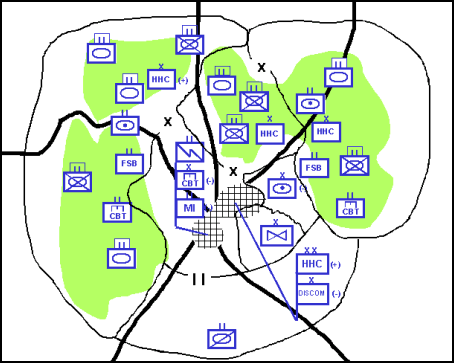
Figure D-6. Encircled Armor Division's Perimeter Defense
D-32. The encircled force commander establishes a reserve, which must have sufficient mobility to react in a timely manner. Therefore, given the availability of sufficient fuel, the commander uses armored and mechanized infantry units as his reserve. He centrally positions them to take advantage of interior lines, which exist if he can shift his forces' locations or reinforce faster than the enemy can shift location or reinforce. He can achieve interior lines through central position (with operations diverging from a central point), from superior lateral LOCs, or greater tactical mobility. If only dismounted infantry forces are available, the commander should establish small local reserves to react to potential threats. He organizes a mobile antiarmor element from the best available antiarmor systems. If possible, subordinate echelons should also retain a reserve.
D-33. While defending encircled, the commander may use his reserve to limit penetrations along the perimeter. It may conduct spoiling attacks or vigorous counterattacks. He initiates a counterattack at the decisive moment and location as the enemy force attempts to penetrate the defensive positions.
D-34. Divisions and corps may consider relocating their aviation systems to locations that are not encircled. Aviation can rapidly bring additional firepower to bear on the encircling enemy force or rapidly move reaction forces to threatened locations along the defensive perimeter. Generally, aviation assets fly out of the encirclement when it becomes small enough to allow the enemy's artillery to range throughout the area.
D-35. The commander centrally controls his fire support systems, such as artillery, to provide support at numerous points along the perimeter and mass the effects of his fires. Designating a fire support coordinator for all fire support systems is a technique for centrally controlling his fires. At lower levels, mortars from various units may be co-located under centralized control, especially if there are insufficient artillery assets. The encircled commander also centrally controls his air defense assets, ensuring that the forward units have sufficient short-range air defense coverage.
D-36. Generally, engineers concentrate first on countermobility, then survivability. An encircled force is particularly vulnerable to the enemy's use of WMD. Dispersal is difficult in a perimeter-type defense; therefore, the next best alternative is position hardening by constructing field fortifications.
D-37. Encircled units must closely monitor their logistic assets, especially if they cannot be resupplied for an extended period. Conservation and centralized control of available resources are imperative. The commander may force his forward units to virtually cease all vehicle movement to allocate remaining fuel assets to the reserve. He retains essential CSS capabilities to sustain his operations. They fall under the control of a senior logistician. When possible, the commander positions these units and their assets out of the reach of potential penetrations in protected and concealed locations. He may incorporate other CSS units into defensive positions in depth or around key facilities. He may choose to use soldiers from CSS units as fillers for combat units, although this action may affect his sustainment capabilities.
D-38. Casualty evacuation and mortuary affairs pose particular challenges for the encircled force. The commander evacuates his wounded from the encirclement whenever possible for humanitarian reasons. This also reduces the logistic burden of providing long-term medical care to wounded soldiers.
D-39. Soldiers have an inherent fear of being encircled by the enemy. Unchecked, this fear can lead to a degradation in morale and discipline. When encircled, soldiers under the firm control of their leaders can withstand the mental strain. Discipline can disintegrate rapidly in an encirclement. Officers and NCOs must uphold the highest standards of discipline. Their personal conduct sets the example. The commander must be seen frequently by his troops and display a calm and confident manner.
D-40. Soldiers in the encirclement must not regard their situation as desperate or hopeless. Commanders and leaders at all levels maintain the confidence of soldiers by resolute action and a positive attitude. They must keep soldiers informed to suppress rumors. The commander counters enemy PSYOP by conducting defensive information operations.
D-41. A breakout is an offensive and a defensive operation. An encircled force normally attempts to conduct breakout operations when one of the following four conditions exist:
The commander directs the breakout or the breakout falls within the intent of a higher commander.
The encircled force does not have sufficient relative combat power to defend itself against enemy forces attempting to reduce the encirclement.
The encircled force does not have adequate terrain available to conduct its defense.
The encircled force cannot sustain itself long enough to be relieved by forces outside the encirclement.
D-42. Units typically task organize into a rupture force, follow-and-assume force, main body, and rear guard to conduct a breakout attack. (Figure D-7). If sufficient forces exist within the encirclement, the commander can organize a reserve and a separate diversionary force from his available resources. Some encircled units will be weakened, and if sufficient combat power does not exist to resource each of these forces, the commander must prioritize which ones to resource. Normally, his first priority is to resource the rupture force. He assigns the responsibilities of those unresourced forces to the forces he can resource. For example, the follow-and-assume force could receive a be-prepared mission to help extract the rear guard, a mission generally given to the reserve. Forces located outside the encirclement can assist the breakout by conducting shaping operations. Above all, the encircled force must maintain the momentum of the attack; otherwise, it is more vulnerable to destruction than it was before the breakout attempt.
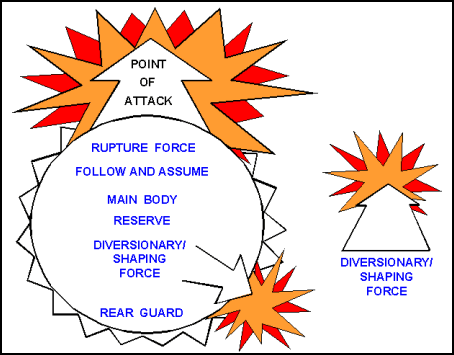
Figure D-7. Organization of Forces for a Breakout Operation
D-43. The force must reorganize based on available resources to conduct the breakout. Without resupply, armored and mechanized infantry units may not be able to move all of their vehicles during the breakout attack. Priority of support may be limited to the rupture force and the rear guard, with the remaining force keeping only sufficient transportation assets to move the wounded and critical assets and supplies. The breakout plan should outline the commander's destruction criteria for equipment or supplies left behind. All vehicles, critical munitions and other supplies, and equipment-less medical-that cannot be moved should be destroyed as soon as possible.
D-44. An encircled force attacks by using the rupture force to penetrate the enemy defensive positions in at least one location. The commander must produce overwhelming combat power at each breakout point. The commander assigns the rupture force, which varies in size from one-third to two-thirds of the total encircled force, the mission to penetrate the enemy's encircling position, widen the gap, and hold the shoulders of the gap until all other encircled forces can move through. The rupture force must have sufficient strength to penetrate the enemy line. This force must use surprise, mobility, and firepower to achieve a favorable combat power ratio over the enemy at the point of attack. (Chapter 3 discusses the penetration as a form of maneuver.)
D-45. Initially, the rupture force is the decisive operation. The attack occurs at a location where the commander anticipates a successful rupture of the enemy's inner ring, which facilitates subsequent operations by enabling the commander to attack enemy units from their flanks and rear. The rupture force commander most likely has additional assets attached to his unit, such as air defense artillery assets or additional engineer soldiers. The commander should integrate these assets to achieve the rupture.
D-46. The follow-and-assume force follows the rupture attack and is committed, as necessary, to maintain the momentum of the attack and secure objectives past the rupture. After the rupture force secures a gap in the enemy encirclement, the follow-and-assume force normally conducts the decisive operation until completing linkup operations with another friendly force. When a unit receives a follow and assume mission in a breakout, its commander must coordinate closely with the rupture force commander regarding the location of the gap, the enemy situation at the rupture point, and the enemy situation, if known, along the direction of attack past the rupture point. The commander should not assign this force supporting shaping tasks, such as clear routes and fix bypassed enemy forces, if those tasks would dissipate its available combat power. If executing these support tasks is vital to the success of the breakout and resources permit, the commander should designate a separate follow and support force to perform these tasks.
D-47. The main body consists of the main command post, the bulk of the CSS, the unit's casualties, and some CS assets. It contains combat forces not required for other missions and has sufficient combat power to protect itself. The commander should place one individual in charge of the various elements of the main body to ensure orderly movement. Typically, the main body establishes a flank security force that deploys once the main body passes through the point of penetration and performs flank screen or a guard mission.
D-48. The rear guard consists of soldiers and equipment left on the perimeter to provide protection for the rupture attack and any shaping operations, such as diversionary forces. Forces left in contact must conduct a vigorous delaying operation on the perimeter so that no portion of the rear guard gets cut off. Under a single commander, the rear guard protects the main body from attack while it moves from the area. In addition to providing security, the rear guard deceives the enemy about the intentions of the encircled force, simulating its activities until the main body clears the gap.
D-49. The primary purpose of a reserve is to retain flexibility through offensive action. The commander makes every attempt to keep a small portion of the encircled force uncommitted so he can employ it at the decisive moment to ensure the success of the breakout. The situation may preclude establishing a separate reserve force because of the need to resource either the rupture force, the follow-and-assume force, or the rear guard. In this event, the commander assigns and prioritizes various be-prepared missions to the follow-and-assume force.
D-50. A successful diversion is important to the success of any breakout operation. If the diversion fails to deceive the enemy regarding the intentions of the encircled force, he could direct his full combat power at the rupture point. On the other hand, the diversionary force may rupture the enemy's lines. If a rupture occurs, the diversion force commander must know the intent of the commander of the encircled force. The encircled force commander may choose to exploit the success of forces conducting a diversion, or he may have to disengage them for use elsewhere in the breakout attempt.
D-51. As a minimum, a commander uses boundaries; a line of departure (LD) or line of contact; time of the attack; phase lines; axis of advance or direction of attack; objectives; and a limit of advance (LOA) to control and synchronize the breakout. (Chapter 2 describes using boundaries and phase lines. Chapter 3 discusses using axis of advance, direction of attack, objectives, LD or line of contact, LOA, and time of attack.) The commander imposes only those control measures necessary to synchronize his operations.
D-52. The commander should initiate a breakout attack as quickly as possible after the enemy encircles his force. While detailed combat information about the enemy's disposition is probably not available, the enemy is normally disorganized at that point in time and is least likely to respond in a coordinated manner. The enemy has not yet brought in sufficient combat power to encircle the friendly force in strength, and weak points exist in his perimeter. However, sometimes the commander will not attempt a breakout until all other options fail.
D-53. Early in an encirclement, there are gaps between or weaknesses in the enemy's encircling forces. The commander uses his available ISR assets to provide information that increases the accuracy of his situational understanding and determines enemy weak points. The commander plans for the breakout attack to capitalize on identified weak points. Although the resulting attack may be along a less-direct route or over less-favorable terrain, it is the best course of action (COA) because it avoids enemy strength and increases the chance for surprise.
D-54. An encircled force may be operating under adverse conditions and may not have all of its ISR systems operating. This forces the commander to operate with low levels of intelligence regarding enemy strengths, weaknesses, and intentions. Within this environment, he should conduct aggressive reconnaissance to gather information on the enemy. The commander should also obtain information from long-range surveillance units, stay-behind units, and special operations forces in the area. If the enemy is in close contact, the commander may be forced to conduct a reconnaissance in force to ascertain information on enemy strengths. In either case, he must select a COA quickly and develop a plan accordingly.
D-55. A shaping operation, such as a diversionary attack, can assist a breakout by diverting enemy attention and resources away from the rupture effort. The force conducting shaping operations may be located either inside or outside the encirclement area. The enemy must regard the efforts of this force as credible and a threat to the continuity of his maneuver plan. The commander should direct the force's efforts to a point where the enemy might expect a breakout or relief effort. The diversionary force is as mobile as available vehicles, fuel stocks, and trafficability allow so it can reposition to take part in the breakout or maneuver elsewhere to support the breakout. Mobile, self-propelled weapon systems suit the needs of forces conducting shaping operations. Additionally, the probability of a successful breakout increases measurably if another friendly force attacks toward the encircled force as it attempts to breakout.
D-56. The commander conducts offensive information operations to assist the breakout attempt. Deception operations mislead the enemy about the intentions of the encircled force, especially the location of the breakout attempt. If it is not possible to breakout immediately, the commander attempts to deceive the enemy regarding the time and place of the breakout by concealing his preparations and changing positions. He can also give the appearance that the force will make a resolute stand and await relief.
D-57. The commander can use dummy radio traffic for the enemy to monitor or landlines that he might tap to convey false information. The breakout should not be along the obvious route toward friendly lines unless there is no other alternative. In this respect, the preparations for a breakout mirror the preparations for any other type or form of offensive operations. As in other offensive actions, secrecy, deception, and surprise allow for success. The other planning considerations for the breakout are the same as for any other attack.
D-58. The commander exploits darkness and limited visibility during a breakout if his encircled forces have superior night-operations capabilities. The cover of darkness, fog, smoke, or severe weather conditions favor the breakout because the encircling enemy weapons are normally less effective then. The enemy has difficulty following the movements of the breakout force during conditions of limited visibility. However, if the encircled force commander waits for darkness or limited visibility, the enemy may have time to consolidate his containment positions. If friendly forces enjoy air superiority, they may initiate a breakout attack during daylight to fully exploit the capabilities of close air support.
D-59. The unit takes all possible precautions to deceive the enemy about the location of the decisive operation. The rupture force minimizes occupation of attack positions before starting the breakout. A commander may require one or more shaping operations to assist the rupture force in penetrating enemy positions and expanding the shoulders. He may use feints and demonstrations to deceive the enemy concerning the location and time of the decisive operation. However, diversionary attacks need not always occur first.
D-60. The commander organizes and controls his rupture force as he would an attack or movement to contact. (See Figure D-8.) The rupture force generates overwhelming combat power at the point of penetration and attempts to rapidly overwhelm enemy positions and expand the penetration. A commander hard pressed to generate sufficient combat power for both the rupture force and the perimeter defense can thin his defensive perimeter in certain areas by using a detachment left in contact in conjunction with a withdrawal prior to executing the attack. He may also shorten the perimeter's length, which reduces the size of the area occupied by the encircled force.
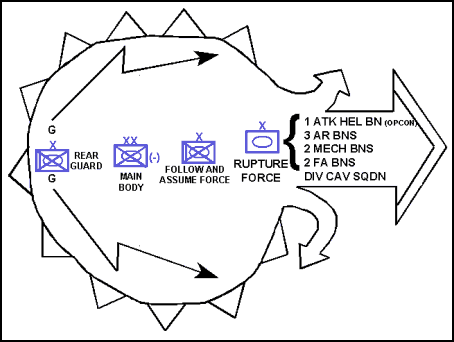
Figure D-8. Breakout by an Encircled Mechanized Division
D-61. The rupture forces applies the breaching fundamentals of suppress, obscure, secure, reduce, and assault to ensure its success at the point of penetration. These fundamentals always apply, but their application will vary based on the prevailing factors of METT-TC. FM 3-34.2 defines these breaching fundamentals and provides guidance regarding the organization of forces, control measures, and planning, preparation, execution, and assessment considerations of combined arms breaching operations.
D-62. If enemy forces at the point of penetration have roughly the same combat power as the rupture force, the commander orders the rupture force to hold the shoulders of the penetration while the follow-and-assume force moves forward. It then becomes the decisive operation. (See Figure D-9.) If the enemy is not in strength, the commander may have the rupture force continue its attack. If there are no identified enemy formations beyond the penetration, the rupture force may transition to a movement to contact. After the encircled friendly force breaks out, it moves toward other friendly forces and links up with them. The next section addresses the control measures and considerations associated with conducting a linkup.
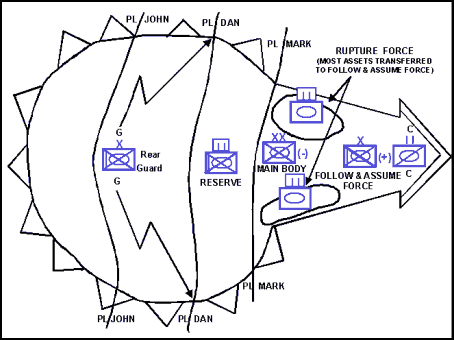
Figure D-9. Continued Breakout by an Encircled Mechanized Division
D-63. Initially, the follow-and-assume force passes through the gap created by the rupture force. It is essential that this force continue to move rapidly from the encircled area toward its final objective. If the follow-and-assume force becomes the encircled commander's decisive operation, it cannot allow itself to become bogged down. Preparatory fires by artillery, Army aviation, close air support, and air interdiction may help the follow-and-assume force in maintaining momentum out of the encircled area.
D-64. Once the breakout attack starts, the rear guard and any diversion forces disengage or delay toward the area of the rupture. Perimeter forces integrate smoothly into the rear of the breakout column. The commander shifts his priority of fires as required by METT-TC once the breakout occurs.
D-65. As other encircled units support or move through the area of penetration, the rear guard commander must spread his forces over an extended area. This requires flexibility and mobility by the rear guard. The perimeter must withstand enemy pressure. If the enemy succeeds in destroying or encircling the original rear guard in the breakout process, the commander must reconstitute a new rear guard.
D-66. The main body follows the follow-and-assume force. It moves rapidly as a single unit on multiple routes in an approach march or road march formation immediately behind the follow-and-assume force, protected on its flanks by security elements. It contains sufficient combat power to protect itself and reinforce the flank or rear security forces if they come under attack.
D-67. Normally, the rear guard initially conducts a withdrawal to break contact with the enemy forces around the perimeter. It contracts the perimeter as it delays back behind the main body. If the enemy closely pursues the breakout force, the efforts of the rear guard may become the decisive operation for the encircled force. The commander should position the reserve where it can also support the rear guard.
D-68. Initially, the priority for fire support is with the rupture force and should focus on suppressing and obscuring the point of penetration. Fire support assets move as part of the main body and rear guard so security forces have adequate fire support. Target identification difficulties resulting from close proximity and intermixing of forces, as well as the rapidly changing ground situation during the execution of a breakout, make the provision of close air support difficult.
D-69. Engineers with the rupture force focus on mobility operations. Engineers with the follow-and-assume force or the reserve improve routes as necessary. Engineers supporting flank security elements focus on conducting countermobility operations. The rear guard must also have enough engineers to conduct countermobility operations.
D-70. The commander prioritizes his air defense assets to protect the rupture force, the rear guard, and the main body. The rear guard is second in priority of protection to help prevent it from being overrun by an enemy pursuit targeted at the main body. The commander must dedicate air defense systems to cover critical points through which the encircled force will pass.
D-71. The commander can relieve his logistics shortfalls by using aerial resupply, ordering external forces to establish support areas, and by using captured supplies. All units and vehicles carry the maximum supplies possible, with emphasis on carrying POL and ammunition. The encircled force only takes vehicles it can support. It may be possible for the higher headquarters of the encircled force to establish an intermediate support base as the breakout attack moves toward a linkup.
D-72. If the success of a breakout attack appears questionable, or if it fails and a relief operation is not planned, one way to preserve a portion of the force might be through organized exfiltration. (Appendix B describes exfiltration as a tactical mission task.)
D-73. A COA that the enemy is not likely to expect from an encircled force is to attack deeper to seize key terrain. It involves great risk but may offer the only feasible COA under some circumstances. Attacking may allow the encircled unit to move to a location where it can be extracted by other ground, naval, or air forces. It is only feasible if a unit can sustain itself while isolated, although that sustainment can come from aerial resupply and enemy supply stocks.
D-74. When the enemy is attacking, an encircled friendly force that attacks deeper into the enemy rear may disrupt his offense and provide an opportunity for linkup from another direction. If the enemy is defending and the attacking force finds itself isolated through its own offensive action, it may continue the attack toward its assigned objective or a new objective located on more favorable defensive terrain.
D-75. A linkup is a meeting of friendly ground forces, which occurs in a variety of circumstances. It happens when an advancing force reaches an objective area previously seized by an airborne or air assault; when an encircled element breaks out to rejoin friendly forces or a force comes to the relief of an encircled force; and when converging maneuver forces meet. Both forces may be moving toward each other, or one may be stationary. Whenever possible, joining forces exchange as much information as possible before starting an operation.
D-76. The headquarters ordering the linkup establishes—
A common operational picture.
Command relationship and responsibilities of each force before, during, and after linkup.
Coordination of fire support before, during, and after linkup, including control measures.
Linkup method.
Recognition signals and communication procedures to use, include-ing pyrotechnics, armbands, vehicle markings, gun-tube orientation, panels, colored smoke, lights, and challenge and passwords.
Operations to conduct following linkup.
D-77. The commander establishes minimum control measures for units conducting a linkup. He assigns each unit an AO defined by lateral boundaries and a RFL that also acts as a LOA. The commander establishes a no-fire area around one or both forces and establishes a coordinated fire line beyond the area where the forces linkup. The linkup forces use the linkup points established by the commander to initiate physical contact. The commander designates alternate linkup points since enemy action may interfere with the primary linkup points. He adjusts such control measures during the operation to provide for freedom of action as well as positive control.
D-78. There are two methods of conducting a linkup. The preferred method is when the moving force has an assigned LOA near the other force and conducts the linkup at predetermined contact points. Units then coordinate further operations. The commander uses the other method during highly fluid mobile operations when the enemy force escapes from a potential encirclement, or when one of the linkup forces is at risk and requires immediate reinforcement. In this method, the moving force continues to move and conduct long-range recognition via radio or other measures, stopping only when it makes physical contact with the other force.
D-79. When one of the units involved is stationary, the commander usually locates the linkup points near the RFL/LOA. (See Figure D-10.) The linkup points are also located near the stationary force's security elements. Stationary forces assist in the linkup by opening lanes in minefields, breaching or removing selected obstacles, furnishing guides, and designating assembly areas. When a moving force is coming to relieve an encircled force, it brings additional logistics assets to restore the encircled unit's combat effectiveness to the desired level.
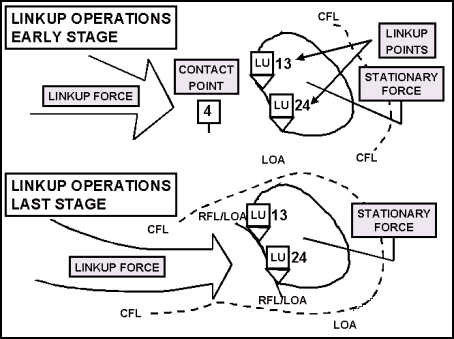
Figure D-10. Linkup of a Moving Force and a Stationary Force
D-80. Linkup between moving units is one of the most difficult operations. The commander establishes a LOA to prevent fratricide. He establishes primary and alternate linkup points for the moving forces near the LOA. Fire support considerations are similar to when a stationary and moving force linkup. Leading elements of each force should exchange liaison teams and be on a common radio net. (See Figure D-11.)
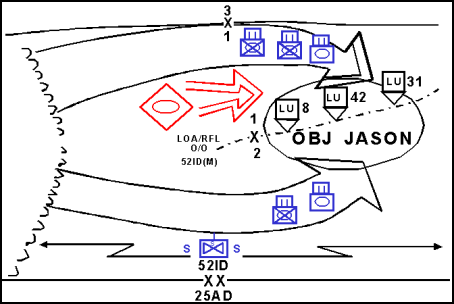
Figure D-11. Linkup of Two Moving Forces
D-81. The commander must carefully coordinate linkup operations with forces of other nations. This is especially true if the two armies are not both members of an alliance with established internationally standardized procedures, or if the units involved have not previously established the necessary procedures.